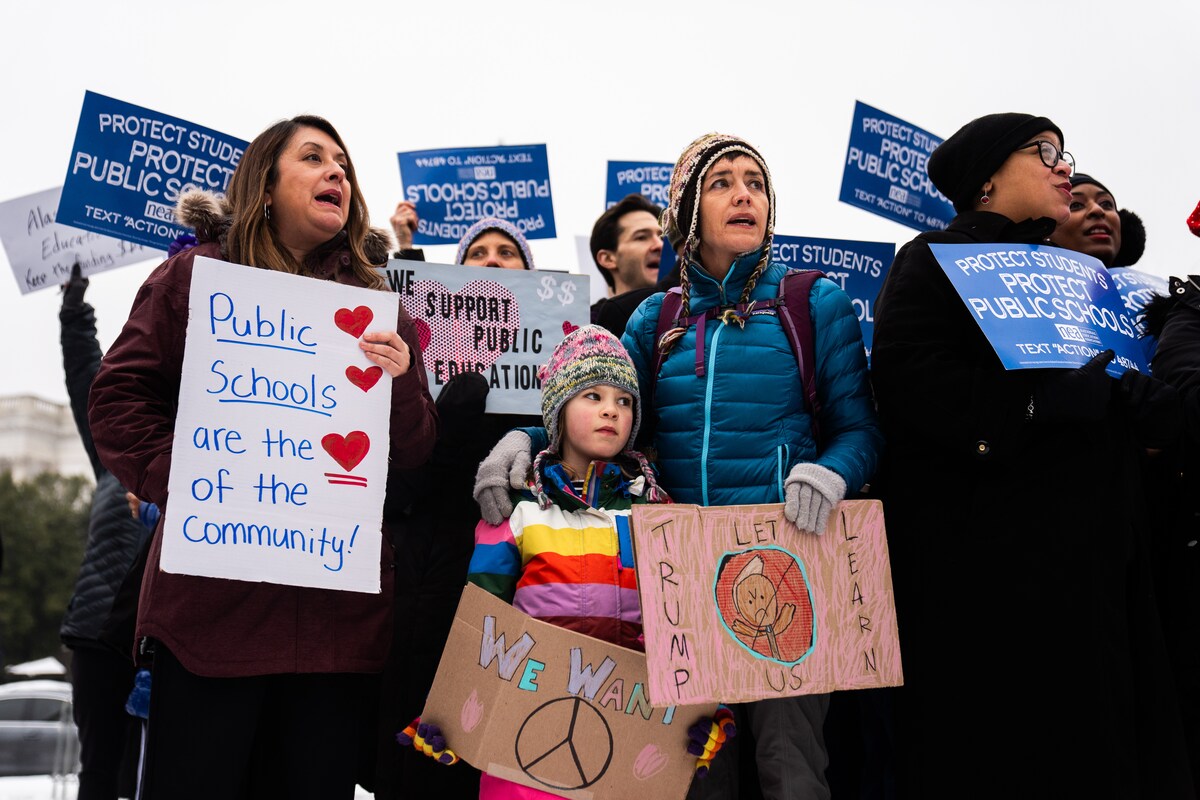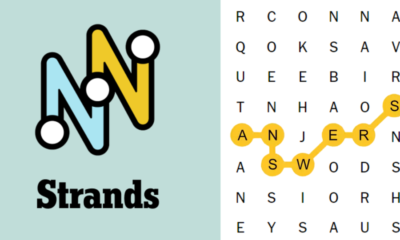News
Trump Teacher Training Grants Freeze: Impact, Controversy, and What It Means for Education

News
Labor Day Sales 2025: Best Shopping Tips & Deals Guide

Labor Day Sales 2025: A Complete Shopping Guide
Labor Day is more than just the unofficial end of summer—it’s also one of the biggest shopping weekends of the year. Every September, retailers roll out massive discounts, offering consumers a chance to save big on everything from home appliances and electronics to clothing, mattresses, and outdoor essentials. For many, Labor Day sales have become a seasonal tradition, combining smart spending with the excitement of finding unbeatable bargains.
In this comprehensive guide, we’ll explore the history of Labor Day shopping, highlight the best product categories to focus on, and share expert strategies to help you maximize your savings this year.
The Origins of Labor Day Shopping
Labor Day, first recognized as a federal holiday in 1894, was created to honor American workers and their contributions to the country’s economic growth. While its roots are grounded in labor movements and workers’ rights, the modern holiday has evolved into both a day of rest and a cultural event.
Retailers quickly realized that the long weekend presented a prime opportunity for promotions. As early as the mid-20th century, businesses started using the holiday to clear out summer inventory and attract consumers with irresistible discounts. Over time, the weekend became synonymous with end-of-season sales, much like Memorial Day or Black Friday. Today, it ranks among the top five shopping holidays in the United States.
Why Labor Day Weekend is Perfect for Bargain Hunters
The timing of Labor Day makes it especially appealing for shoppers. Positioned between summer clearance and fall product launches, the weekend offers the best of both worlds. Here’s why it’s ideal for deal seekers:
-
Seasonal turnover: Retailers slash prices on outdoor furniture, grills, summer clothing, and gardening supplies to make room for fall and holiday stock.
-
Appliance deals: Many major brands release new appliance models in September and October, which means outgoing models get steep markdowns.
-
Back-to-school overlap: Families benefit from discounts on laptops, backpacks, and dorm room essentials.
-
Holiday prep: Early planners take advantage of sales to stock up on gifts, décor, or home upgrades before the holiday rush.
Categories with the Best Labor Day Discounts
Not every product category is worth your time during the weekend, but several stand out year after year. Let’s break down the top categories to watch.
1. Home Appliances and Electronics
Major retailers like Best Buy, Home Depot, and Lowe’s use the holiday to discount refrigerators, dishwashers, washers, dryers, and televisions. You can often save hundreds of dollars on premium brands.
2. Furniture and Mattresses
Furniture stores and online brands offer sitewide discounts, while mattress retailers run some of their deepest promotions of the year. This is one of the best times to invest in better sleep without overspending.
3. Outdoor Essentials
Since summer is winding down, items like grills, patio sets, lawnmowers, and outdoor décor are heavily marked down. Shoppers can enjoy end-of-season savings and prepare for next summer.
4. Clothing and Fashion
Both summer and transitional fall apparel are on sale. Expect clearance racks full of swimsuits, sandals, and shorts, along with discounts on jeans, jackets, and boots.
5. Travel and Experiences
Travel companies and airlines often release limited-time offers for fall and winter getaways. From discounted flights to hotel packages, it’s a great time to book upcoming trips.
Shopping Strategies for Maximum Savings
Scoring the best deals during Labor Day weekend takes more than just browsing. To shop like a pro, follow these strategies:
Plan Ahead
Start by identifying the items you truly need. Make a list and set a budget to avoid impulse purchases. Retailers will tempt you with flashy discounts, but focus on essentials.
Compare Prices
Use price comparison tools or apps to ensure the advertised discount is genuine. Sometimes, retailers inflate original prices to make the markdown look more dramatic.
Look for Bundle Deals
Some retailers offer packages—like a washer and dryer combo or a living room furniture set—that provide greater value than purchasing items individually.
Check Online and In-Store
Don’t limit yourself to one channel. Online stores may offer exclusive promo codes, while in-store shopping sometimes includes clearance racks not available online.
Shop Early, but Don’t Rush
Popular items sell out quickly, so shop early in the weekend. However, the best markdowns often appear on Labor Day itself, as retailers aim to clear remaining stock.
Labor Day Sales: Online vs. In-Store
E-commerce growth has reshaped the holiday shopping experience. While traditional brick-and-mortar retailers still draw crowds, online shopping offers unmatched convenience.
-
Online advantages: Wider selections, exclusive promo codes, free shipping offers, and the ability to compare prices instantly.
-
In-store advantages: Immediate product availability, hands-on experience, and access to hidden clearance sections.
Many savvy shoppers use a hybrid approach—researching and comparing online, then heading to stores for final purchases.
Common Mistakes Shoppers Make
Even with great deals, shoppers can fall into traps that reduce savings. Avoid these common mistakes:
-
Ignoring warranties and return policies: Especially for appliances and electronics, always read the fine print.
-
Focusing only on discounts: A low price isn’t a deal if you don’t need the product.
-
Skipping reviews: Never buy big-ticket items without checking customer feedback.
-
Forgetting about shipping costs: Free shipping thresholds can make or break online bargains.
Trends to Expect in 2025
This year’s shopping season is expected to bring some unique trends:
-
Sustainability discounts: Eco-friendly brands may offer promotions on green products, from recycled clothing to energy-efficient appliances.
-
Tech upgrades: With advancements in smart home technology, expect big markdowns on smart speakers, security systems, and connected devices.
-
Flexible payment options: “Buy Now, Pay Later” platforms will play a larger role, making higher-ticket items more accessible.
-
Personalized shopping: Retailers will use AI-driven recommendations to customize deals for individual consumers.
Expert Tips for Different Shoppers
For Families
Focus on back-to-school deals, home essentials, and furniture that can withstand daily use. Consider bundling purchases to save more.
For Tech Enthusiasts
Target older-generation electronics that retailers are phasing out. Look for bundle deals on gadgets and accessories.
For Homeowners
Prioritize appliances, outdoor equipment, and renovation materials. The savings on these items can be substantial compared to other times of the year.
Labor Day Sales: The Shopper’s Holiday
When most people think of holiday shopping, Black Friday and Cyber Monday dominate the conversation. Yet, Labor Day sales are just as rewarding—if not better for certain categories. With discounts across multiple industries, a well-prepared shopper can upgrade their home, wardrobe, and lifestyle while staying within budget.
Unlike the frenzy of November’s shopping holidays, Labor Day weekend provides a more relaxed atmosphere, giving consumers time to think before they buy. This makes it the perfect opportunity to combine smart planning with great savings.
Conclusion: Shop Smart, Save Big
Labor Day weekend has cemented its place as a shopper’s holiday, offering unbeatable deals on everything from household essentials to luxury splurges. By knowing which categories to target, avoiding common pitfalls, and applying expert strategies, you can maximize your savings and enjoy a stress-free shopping experience.
As you plan for this year’s holiday weekend, remember that the true value of shopping isn’t just in the discounts—it’s in making thoughtful purchases that enhance your lifestyle and bring long-term satisfaction. Whether you’re upgrading appliances, refreshing your wardrobe, or planning your next vacation, Labor Day sales provide the perfect chance to shop smart and save big.
News
Explore JPost Israel’s Leading English News Platform

JPost A Comprehensive Guide to Israel’s Leading English News Outlet
Introduction
In a world where timely and accurate news is essential, few publications serve as reliable a role in the Middle East and Jewish global affairs as JPost. Short for The Jerusalem Post, JPost is Israel’s top English-language news outlet, widely read by policymakers, diplomats, journalists, scholars, and general readers across the globe.
Whether you’re tracking developments in the Israeli-Palestinian conflict, monitoring Israel’s thriving tech scene, or staying up to date with Jewish diaspora affairs, JPost offers unmatched access and insight. This article delves deep into the publication’s history, structure, coverage, controversies, and its place in the digital era.
The Origins and Evolution of JPost
From Palestine Post to Jerusalem Post
JPost was originally founded in 1932 as The Palestine Post by Gershon Agron, an American-born Zionist journalist. The publication served as a voice for the Jewish community in British Mandate Palestine, offering news in English and advocating for the creation of a Jewish state.
Following the establishment of Israel in 1948, the newspaper was renamed The Jerusalem Post in 1950, aligning its identity with the newly founded nation and its capital city. From that point on, it would evolve into a critical media institution for both local and global audiences.
Growth Into a Global Brand
Over the decades, JPost has cemented its place as a reputable news source. While the paper is headquartered in Jerusalem, its influence stretches far beyond Israel’s borders. Print editions reached Jewish and English-speaking communities across North America, Europe, and Australia, while its online expansion further extended its global reach.
The Rise of JPost in the Digital Age
Website and Digital Expansion
JPost’s website, JPost , has become one of the most visited English-language news platforms in the Middle East. It offers breaking news, live updates, editorial analysis, op-eds, and features covering a broad spectrum of topics. The site also includes video content, podcasts, and interactive digital tools, appealing to modern-day media consumers.
Its clean layout, fast updates, and robust archives have contributed to its success as a go-to source for Middle East news in English.
Social Media and Multimedia Integration
The digital strategy of JPost includes an active presence on social media platforms like Facebook, Twitter, Instagram, LinkedIn, and YouTube. The publication shares snippets of breaking news, interviews, and infographics, offering content in both short-form and long-form formats to suit all types of users.
Its mobile app further supports real-time push notifications, catering to on-the-go readers and journalists.
Editorial Focus and Core Coverage Areas
Israeli Politics and Government
One of JPost’s core strengths lies in its comprehensive and insightful coverage of Israeli politics. It reports on:
-
Knesset (parliament) proceedings
-
Election coverage and analysis
-
Prime Minister’s Office decisions
-
Cabinet reshuffles
-
Political scandals and transparency reports
Whether you’re a foreign journalist or a concerned citizen, JPost provides the political pulse of Israel.
Regional Affairs and Middle East Coverage
As the Middle East remains one of the world’s most volatile regions, JPost covers:
-
Israeli-Palestinian relations
-
Peace deals and normalization treaties
-
Military operations and defense strategies
-
Terror attacks and security concerns
-
Developments in Iran, Syria, Lebanon, and Gaza
This kind of in-depth and localized reporting gives JPost a strong edge over international outlets.
Jewish World and Diaspora Affairs
Beyond Israel, JPost also has a deep commitment to covering Jewish life worldwide. The outlet features stories on:
-
Antisemitism trends and responses
-
Jewish community events
-
Educational and religious developments
-
Holocaust remembrance and education
-
Jewish identity in secular societies
This makes JPost a central source for the global Jewish community.
Inside the JPost Editorial Team
Journalistic Standards and Credibility
JPost operates with a mix of experienced journalists, young reporters, analysts, and foreign correspondents. The paper adheres to strong journalistic ethics, including verification, multiple sourcing, and a dedication to transparency.
Its editorial board also includes guest contributors and analysts from around the world—adding academic, military, and policy perspectives to the content.
Opinion Pieces and Political Balance
Though JPost has often been categorized as center-right, particularly regarding Zionism and Israeli security, it maintains a platform for diverse opinions. You’ll find liberal, centrist, and conservative voices sharing space—sometimes even clashing—which creates a dynamic editorial ecosystem.
Op-eds range from local commentators to international thought leaders, offering readers a well-rounded perspective.
JPost Conferences and Global Influence
JPost doesn’t limit itself to print and online media. It also organizes high-profile international conferences, especially in New York and Jerusalem. These events feature:
-
Israeli Prime Ministers and Presidents
-
U.S. Senators and Ambassadors
-
Military officials and defense experts
-
Academics and thought leaders
-
Jewish community organizers and philanthropists
These events underscore the paper’s role as more than just a news outlet—it acts as a convening power for meaningful dialogue and policymaking.
JPost in Times of Crisis
During national and global crises, JPost plays an even more critical role. Whether it’s:
-
The COVID-19 pandemic
-
The 2023 judicial reform protests
-
Hezbollah and Hamas threats
-
Iran nuclear deal negotiations
JPost’s correspondents provide fast, accurate, and verified information. During times of war, the site often introduces live blog coverage, maps, and analysis tools to help readers track developments in real time.
Controversies and Criticism
As with any major publication, JPost has faced its share of controversy. It has been criticized from both left and right—accused at times of:
-
Overly nationalist reporting
-
Insufficient balance in Israeli-Palestinian coverage
-
Publishing sensational headlines
-
Lack of depth on socio-economic issues in Israel
Nonetheless, the publication continues to offer an open forum and frequently publishes reader letters, corrections, and op-eds that challenge its editorial line—demonstrating a commitment to free expression.
JPost’s Global Audience
Who Reads JPost?
The audience of JPost includes:
-
Israeli citizens (English speakers)
-
Jewish diaspora in the U.S., UK, Canada, Australia, South Africa
-
Diplomats, journalists, and policymakers
-
Students, researchers, and think tanks
-
Christian Zionist communities worldwide
The combination of accessibility, credibility, and relevance makes it one of the top-rated international sources for news from Israel.
Educational and Research Relevance
JPost is frequently cited in:
-
University syllabi for Middle Eastern studies
-
Policy papers and government briefings
-
Think tank publications
-
International media reporting
Its archives and real-time reporting serve as JPost essential tools for analysis and learning.
Future Outlook for JPost
Innovation and Expansion
As JPost continues to evolve, several initiatives point to its forward-thinking approach:
-
More in-depth video and podcast content
-
Arabic-language content expansion
-
Hebrew-English side-by-side reporting tools
-
Partnerships with global news networks
-
Stronger AI integration for personalized reader experiences
Challenges Ahead
JPost will need to navigate:
-
Rising misinformation online
-
Competition from newer digital media
-
Political pressures from domestic and foreign interests
-
Monetization in a changing ad market
Still, with its history and infrastructure, it appears well-positioned for continued relevance.
Conclusion: Why JPost Matters
The JPost brand stands tall among international English-language newspapers. With its roots in the struggle for Jewish statehood and its wings now spread across the global digital landscape, JPost provides an essential window into Israel and the Jewish world.
Its legacy of journalistic integrity, editorial diversity, and real-time accuracy makes it indispensable for anyone seeking to understand the complexities of the Middle East and beyond.
News
YWN: The Orthodox Jewish News Hub for Truthful Updates

YWN Exploring the Voice of Orthodox Jewish News
In today’s hyper-connected age, communities across the world seek news sources that not only report facts but also align with their values and lifestyles. For the Orthodox Jewish community, one such trusted outlet is YWN—short for Yeshiva World News. Widely known across Jewish neighborhoods and digital spaces, YWN is more than just a news platform. It is a reflection of faith, a beacon of community identity, and a daily companion to thousands who wish to stay informed while staying rooted in Torah values.
In this article, we explore the complete journey and significance of YWN—from its origins to its role in modern Jewish life.
What is YWN?
YWN, or Yeshiva World News, is a leading online news source designed primarily for Orthodox Jewish readers. Established in the early 2000s, it provides breaking news, community updates, political developments, religious commentary, and more—all curated through a Torah-aligned lens.
Unlike mainstream outlets that cater to general audiences, YWN is customized for:
-
Yeshiva students and educators
-
Rabbinic leaders and Torah scholars
-
Observant families and community members
-
Jewish professionals across the globe
It fills the gap for those seeking real-time information without exposure to inappropriate content or ideologies that clash with religious principles.
The Founding and Vision of YWN
The creation of YWN stemmed from a clear need: to develop a kosher, trustworthy news outlet that reflects the values of the Torah-observant community. Before YWN, religious Jews had limited choices. Either they relied on printed weeklies or ventured into secular platforms filled with immodest ads, biased narratives, or culturally disconnected reporting.
A Humble Beginning
YWN began as a grassroots effort—often operated by volunteers—dedicated to compiling news stories relevant to the frum (observant) world. With time, growing readership and technological advancements transformed YWN into a full-fledged, professionally operated platform.
Today, it is among the most visited Orthodox Jewish news sites, with millions of monthly readers spanning the U.S., Israel, Europe, and beyond.
Categories and Content Offered by YWN
YWN offers a broad spectrum of content, staying faithful to both Torah values and journalistic integrity. Its editorial approach balances religious sensitivities with the urgency of breaking headlines.
Major Categories on YWN
-
Breaking News – Immediate updates from across the globe, especially events affecting Jews.
-
Israel News – Political changes, military operations, elections, and religious debates in Israel.
-
U.S. & World – National and global news, always presented with cultural awareness.
-
Jewish News – Yeshiva openings/closings, community tragedies, simchas, and rabbinical appointments.
-
Levayos & Obituaries – Notices of funerals and eulogies for community leaders and members.
-
Opinion and Editorials – Columns by Rabbis, educators, and respected voices in the frum world.
-
Torah & Inspiration – Weekly Divrei Torah, holiday guides, and shiur (lesson) announcements.
-
Health & Safety – Public service announcements, pandemic updates, and wellness advisories.
This broad editorial mix makes YWN a “one-stop” digital portal for the Orthodox Jewish way of life.
How YWN Maintains Torah Values in Journalism
One of the biggest challenges in media today is maintaining authenticity and values while staying relevant. YWN has consistently upheld Halachic standards, even in digital presentation.

Strict Editorial Policies
-
Modesty in Images: Photos are carefully selected or blurred to meet tzniut (modesty) guidelines.
-
Respectful Language: Avoids slang, vulgarity, and sarcasm common in secular media.
-
No Lashon Hara: Gossip and defamatory content are filtered with rabbinic oversight.
-
Credibility: Sources are verified, and pikuach nefesh (life-saving importance) is a key editorial driver.
YWN proves that serious journalism can exist without compromising religious principles.
YWN’s Role During Community Crises
YWN shines brightest during times of communal need or crisis. Its infrastructure allows it to act not only as a news outlet but also as a community mobilizer.
Case Examples
-
COVID-19 Response: YWN delivered real-time updates on closures, health guidelines, and statements from major Poskim (halachic decisors).
-
Security Alerts: YWN has informed readers about potential terror threats in Israel and antisemitic incidents globally, allowing communities to respond swiftly.
-
Missing Persons: Posts about missing individuals have often led to successful searches through crowd-sourced tips.
In such moments, the speed and reach of YWN can literally save lives.
Engagement Beyond Headlines
YWN is not just about reading the news—it’s about being part of it. The platform encourages communal interaction and feedback, often influencing broader conversations within the Orthodox world.
Features That Engage Readers
-
Live Feeds of major levayos, rallies, or speeches by gedolim
-
Reader Comments (moderated for decorum)
-
WhatsApp and Email Alerts for urgent news
-
Community Announcements – Lost property, blood drives, school updates, etc.
-
Advertorial Sections – For frum businesses, events, and charitable causes
This two-way communication fosters trust, familiarity, and participation.
How YWN Compares to Other Orthodox News Platforms
The Orthodox media landscape includes several noteworthy players, each with unique tones and audiences. Among them are:
-
VosIzNeias (VIN)
-
Matzav.com
-
Hamodia (print + digital)
-
Jewish Press
-
Arutz Sheva (more Zionist-oriented)
YWN’s Distinct Advantages
-
Real-Time Speed: Frequently updates throughout the day.
-
Broad Coverage: Combines community affairs with global Jewish concerns.
-
Clean Interface: Easy to navigate, free of inappropriate ads.
-
Professional Tone: Combines respect with journalistic clarity.
These factors contribute to YWN’s lasting popularity and loyal readership.
Audience Profile of YWN
YWN caters to a highly engaged, value-driven audience that spans demographics and geographies.
Key Readership Groups
-
Bochurim and Kollel Avreichim – Yeshiva and kollel students accessing kosher news during breaks.
-
Working Professionals – Businessmen and women who seek updates without compromising faith.
-
Mothers and Homemakers – Staying informed while managing Jewish homes.
-
Rabbis and Teachers – Using headlines as talking points in shiurim or community addresses.
Its language, content, and delivery are tailored to the sensitivities and intellectual level of this audience.
YWN in the Digital Age
As more people rely on mobile devices for news, YWN has adapted to meet those demands without compromising its identity.
Digital Adaptations
-
Mobile-Friendly Website
-
App Integrations (through third-party kosher filters)
-
WhatsApp Channels for instant updates
-
Social Media Presence (carefully moderated)
-
Video Clips from events, lectures, and breaking news
YWN remains agile in the tech space, ensuring it meets its readers where they are—without drifting from Torah standards.
Challenges and Ethical Considerations
Running a news outlet in the Orthodox world comes with unique responsibilities. YWN must balance speed with sensitivity, transparency with respect, and freedom of information with halachic accountability.
H3: Common Challenges
-
Reporting on sensitive scandals without fueling gossip
-
Deciding what to publish when community politics are involved
-
Navigating the Israel vs. Diaspora tone in politically charged topics
-
Monetization, especially with kosher ads and sponsored content
So far, YWN has successfully managed these tensions by maintaining an editorial compass rooted in responsibility.
The Future of YWN
With its foundation secure, YWN future looks promising. As new generations of Torah Jews grow up more digitally native, YWN’s challenge is to evolve while staying loyal to its mission.
Growth Areas
-
Audio Content – Podcasts and parsha insights
-
Expanded Youth Section – Torah news for teens and young adults
-
Multi-Language Support – For French, Hebrew, and Spanish-speaking readers
-
AI-Powered Search – Enhanced access to halachic articles or archive stories
If YWN continues its growth while staying true to halacha and community needs, it will remain a fixture of Jewish digital life.
Conclusion: Why YWN Remains a Beacon in Orthodox Media
In a media landscape often riddled with misinformation, distraction, and values misalignment, YWN—Yeshiva World News—has established itself as a reliable, responsible, and religiously aligned source of information. It is not merely a news site; it is a communal resource, a virtual beis midrash of ideas, announcements, and Torah-grounded discourse.
By combining timely reporting with spiritual integrity, YWN has proven that the digital world and Torah values are not mutually exclusive—they can, in fact, thrive together.
As long as the Torah world seeks clarity, community, and truth, YWN will continue to serve as one of its most important digital voices.
-

 Nature4 months ago
Nature4 months agoFascinating World of Facts: A Journey Through Datos Curiosos
-

 Lifestyle5 months ago
Lifestyle5 months agoHow to Make Slime: The Ultimate DIY Guide for Kids and Adults
-

 Entertainment5 months ago
Entertainment5 months agoUnderstanding Basketball Zero Codes: A Complete Guide
-

 Entertainment5 months ago
Entertainment5 months agoStrands NYT: Unraveling the Digital Threads of a New Online Trend
-

 Business3 months ago
Business3 months agoWho Is Alex Karp Wife? Private Life of Palantir CEO
-

 Celebrity4 months ago
Celebrity4 months agoWho Is Drew Pritchard New Wife? Inside the Antique Star’s Private Love Life
-

 Business3 months ago
Business3 months agoRahki Giovanni Net Worth: Income, Fitness, and Success
-

 Celebrity3 months ago
Celebrity3 months agoMelanie Zanona Salary, Career Growth & Net Worth Revealed




